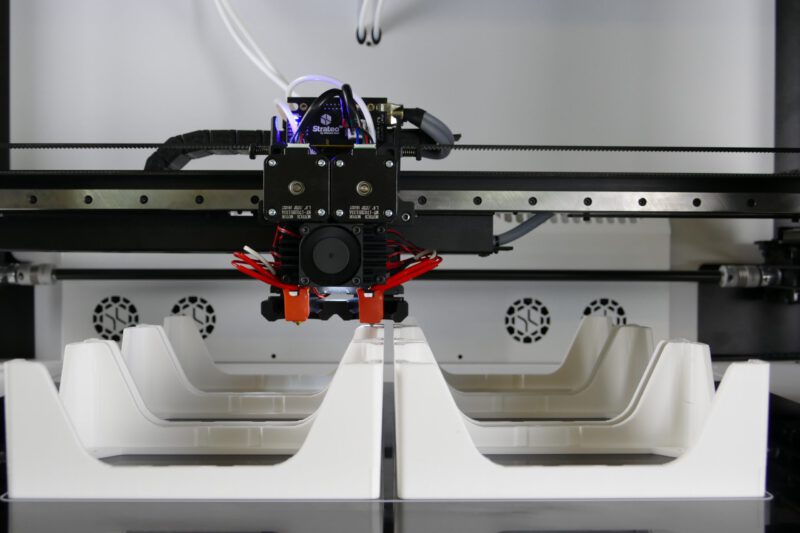3D printing resins open the door to all kinds of exciting projects, but they require some extra safety steps.
There are dozens of 3D printing resins, many with unique properties that make them ideal for certain projects. They were only used for 3D printing in areas like manufacturing or engineering, largely because they were too expensive for average consumer use. That is no longer the case. Today, resin 3D printers are widely available, just like filament printers.
3D printing with resins has many advantages but they also pose a few unique hazards. People should be aware of these dangers and the precautions needed to stay safe.
Are 3D Printing Resins Actually Dangerous?
The short answer is, yes, 3D printing resins are dangerous. However, the main dangers they pose come from improper, careless, or excessive use. The same is true of any tool, even craft glue guns. Makers can pursue resin 3D printing safely if they clearly understand the risks.
Here are three things they should remember to keep safe when handling 3D printing resins.
3D Printing Resins Are Toxic
According to OSHA terminology, 3D printing resins are toxic, meaning they can cause injury or illness under certain conditions. This mainly occurs due to improper use — such as ingesting resins or using a 3D printer incorrectly.
For example, resins should never be used to print anything that is meant to come into contact with skin, eyes, or water. Most 3D printing resins release chemicals that can be toxic, particularly to aquatic life, such as pet fish. Additionally, unused 3D printer resin can be dangerous since it is a liquid. A child who mistakes a bottle of this material for a drink could become seriously ill.
It is also important to keep the resin curing process in mind. Resin 3D printing projects must be cured with either sunlight or artificial UV light after printing. They are considered hazardous waste until this process is complete. The same is true of anything wet resin comes into contact with.
Improper Use Poses Significant Hazards
The main area where hazards arise is the irresponsible or improper use of 3D printing resin. Fumes are emitted during the process, so printing inside or in a space without excellent ventilation can pollute indoor air. This can cause headaches and also lead to respiratory issues for those exposed to resin fumes for extended periods.
Additionally, 3D printing resins can cause major skin irritation, leading to rashes, itching, and dermatitis inflammation. Contact with uncured resin can also allow chemicals to seep into the skin, which can lead to severe reactions.
There Can Be Long-Term Side Effects
Scientists are still working out just how much harm 3D printing resin can cause, particularly in the smaller spaces where consumer printers are being used. However, some rare long-term side effects have been discovered and hypothesized.
Long-term exposure to resin fumes or contact with uncured resin can lead to allergic reactions as well as severe respiratory issues. Additionally, studies have discovered that 3D printing resins can release carcinogenic particles, meaning that exposure may increase the risk of cancer. Different types of 3D printing materials released various particles in the study, some of which were harmless while others were known carcinogens.
How to Stay Safe When Using Resins
Despite the hazards, it is still possible to use 3D printing resins safely. Makers just need to practice the right safety precautions, including the types of resins they use, how they print, and the gear they use.
Makers need to ensure they are only using high-quality resins. Any kind of trustworthy chemical or materials manufacturer will follow strict quality and safety standards that comply with federal regulations. Stick to buying 3D printing resins from only reputable companies. “Home brew” resins or manufacturers that don’t clearly comply with rules, usually documented on the packaging, should be avoided.
There are also some best practices to remember during the printing process. One of the greatest dangers of using resin 3D printing is the fumes, so it is important to only use printers in well-ventilated areas, even outside, if possible. It is also a good idea to wear a mask, such as a half-mask respirator, to protect against fumes. This is particularly important when working in an enclosed environment. Eye protection, such as commonplace plastic safety glasses, is also advisable.
Additionally, makers should wear gloves when using 3D printing resin to protect their hands. Disposable plastic versions will keep resin from irritating or inflaming skin. Makers just need to be careful that their gloves don’t rip at any point. They may also need to be “cured” afterward if any resin does get on them since uncured resin is hazardous waste. The same applies to any resin or any item it’s on that needs to be disposed of, such as empty bottles. Always cure it first.
Types of 3D Printing Resins
Despite the risks, 3D printing with resin can still be safe and result in high-quality projects. Today, dozens of different materials can be 3D printed – even wood. Every item comes with its own risks and benefits. Makers just need to ensure they are safe and responsible when printing.
Many different types of 3D printing resins are available today, varying in color, durability, and other qualities. Some may even be safer to use than others, such as environmentally friendly and water-washable options. Tough resin is great for durability, while flexible ones open the door to unique projects. Clear options can be particularly fun to use since makers can use resin dyes to create custom-colored products.
Safe and Smart 3D Printing With Resins
3D printing resins can be great for many different types of projects. However, makers must be careful about how and where they use them. It’s safe as long as they stick to well-ventilated areas and wear the proper protective gear. Like any tool, 3D printing requires caution and responsibility. People can use resins to create incredible prints made of high-quality materials if they keep the right safety practices in mind.










